NEC - PC Engine / SuperGrafx (Geargrafx)¶
Background¶
Geargrafx is an open source, cross-platform, PC Engine / TurboGrafx-16 / SuperGrafx emulator written in C++.
- Accurate emulation supporting the entire HuCard PCE / SGX catalog
- CD-ROM², Super CD-ROM² and Arcade CD-ROM² systems
- Multi Tap support (up to 5 players)
- Controllers:
- Standard Gamepad (2 buttons)
- Avenue Pad 3 (3 buttons, auto-configured based on game)
- Avenue Pad 6 (6 buttons)
- Internal database for automatic rom detection and hardware selection if
Autooptions are selected - Backup RAM support
- Save state support
- Retro Achievements support
- Adjustable scanline count (224p, 240p, or manual)
- RGB or Composite color output
- Supported platforms (libretro): Windows, Linux, macOS, Raspberry Pi, Android, iOS, tvOS, PlayStation Vita, PlayStation 3, Nintendo 3DS, Nintendo GameCube, Nintendo Wii, Nintendo WiiU, Nintendo Switch, Emscripten, Classic Mini systems (NES, SNES, C64, etc.), OpenDingux, RetroFW and QNX.
The Geargrafx core has been authored by
The Geargrafx core is licensed under
A summary of the licenses behind RetroArch and its cores can be found here.
BIOS¶
Geargrafx requires a BIOS file to run CD-ROM games.
Required or optional firmware files go in RetroArch's system directory.
Attention
Any CD-ROM System BIOS will work, but some are known to be incompatible with certain games.
Attention
You can choose the BIOS to use in the core options menu.
| Filename | Description | md5sum |
|---|---|---|
| syscard3.pce | Super CD-ROM2 System V3.xx - Required | 38179df8f4ac870017db21ebcbf53114 |
| syscard2.pce | CD-ROM System V2.xx - Optional | |
| syscard1.pce | CD-ROM System V1.xx - Optional | |
| gexpress.pce | Game Express CD Card - Optional |
Extensions¶
Content that can be loaded by the Geargrafx core have the following file extensions:
- .pce
- .sgx
- .cue
- .chd
Geargrafx supports chd, cue/bin, cue/img and cue/iso CD-ROM images. cue/iso + wav is also supported when audio track format is 44100Hz, 16 bit, stereo. It does not support MP3 or OGG audio tracks.
RetroArch database(s) that are associated with the Geargrafx core:
Features¶
Frontend-level settings or features that the Geargrafx core respects.
| Feature | Supported |
|---|---|
| Restart | ✔ |
| Screenshots | ✔ |
| Saves | ✔ |
| States | ✔ |
| Rewind | ✔ |
| Netplay | ✕ |
| Core Options | ✔ |
| Memory Monitoring (achievements) | ✔ |
| RetroArch Cheats | ✔ |
| Native Cheats | ✕ |
| Controls | ✔ |
| Remapping | ✔ |
| Multi-Mouse | ✕ |
| Rumble | ✕ |
| Sensors | ✕ |
| Camera | ✕ |
| Location | ✕ |
| Subsystem | ✕ |
| Softpatching | ✔ |
| Disk Control | ✕ |
| Username | ✕ |
| Language | ✕ |
| Crop Overscan | ✔ |
| LEDs | ✕ |
Directories¶
The Geargrafx core's library name is 'Geargrafx'
The Geargrafx core saves/loads to/from these directories.
Frontend's Save directory
| File | Description |
|---|---|
| *.srm | Cartridge battery save |
Frontend's State directory
| File | Description |
|---|---|
| *.state# | State |
Geometry and timing¶
- The Geargrafx core's provided FPS is 59.82
- The Geargrafx core's provided sample rate is 44100 Hz
- The Geargrafx core's base width is dependent on the content and overscan settings (Without overscan: 256, 341, 512. With overscan: 280, 373, 560)
- The Geargrafx core's base height is dependent on the 'Scanline Start' and 'Scanline End' core options.
- The Geargrafx core's max width is 560
- The Geargrafx core's max height is 242
- The Geargrafx core's provided aspect ratio is dependent on the 'Aspect Ratio' core option.
Core options¶
The Geargrafx core has the following options that can be tweaked from the core options menu. The default setting is bolded.
Settings with (restart) means that core has to be closed for the new setting to be applied on next launch.
-
System (restart) [geargrafx_console_type] (Auto|PC Engine (JAP)|SuperGrafx (JAP)|TurboGrafx-16 (USA))
Select the console type to emulate. The default setting, Auto, automatically detects the appropriate console type based on the loaded content. Many US games will not start if a Japanese system is detected.
-
Aspect Ratio [geargrafx_aspect_ratio] (1:1 PAR|4:3 DAR|6:5 DAR|16:9 DAR|16:10 DAR)
Select which aspect ratio will be presented by the core.
- 1:1 PAR selects an aspect ratio that produces square pixels.
- 4:3 DAR forces 4:3 aspect ratio.
- 6:5 DAR forces 6:5 aspect ratio.
- 16:9 DAR forces 16:9 aspect ratio.
- 16:10 DAR forces 16:10 aspect ratio.
-
Overscan [geargrafx_overscan] (Disabled|Enabled)
This option enables/disables overscan (borders). Overscan width is dependent on the content.
-
Scanline Count [geargrafx_scanline_count] (224p|240p|Manual)
Select which scanline count will be used in emulation.
- 224p forces 224 scanlines.
- 240p forces 240 scanlines.
- Manual lets you set the first and last scanline manually.
-
Scanline Start (Manual) [geargrafx_scanline_start] (3|values from 0 to 30)
This option will set the first scanline to be displayed. Scanline 0 is the first visible scanline. This option is only available when 'Scanline Count' is set to 'Manual'.
-
Scanline End (Manual) [geargrafx_scanline_end] (241|values from 220 to 241)
This option will set the last scanline to be displayed. Scanline 241 is the last visible scanline. This option is only available when 'Scanline Count' is set to 'Manual'.
-
Composite Colors [geargrafx_composite_colors] (Disabled|Enabled)
If enabled, the core will use composite colors instead of RGB colors.
-
No Sprite Limit [geargrafx_no_sprite_limit] (Disabled|Enabled)
Enabling this option removes the per-line sprite limit, but may cause glitches in certain games. It's best to keep this core option disabled.
-
Backup RAM (restart) [geargrafx_backup_ram] (Enabled|Disabled)
This option allows you to disable backup RAM (not recommended).
-
CD-ROM (restart) [geargrafx_cdrom_type] (Auto|Standard|Super CD-ROM|Arcade CD-ROM)
Choose the type of CD-ROM system to emulate. The Auto setting automatically selects the appropriate CD-ROM type based on the loaded content.
-
CD-ROM Bios (restart) [geargrafx_cdrom_bios] (Auto|System Card 1|System Card 2|System Card 3|Game Express)
Specify the BIOS file to use for CD-ROM emulation. The Auto setting automatically selects the appropriate BIOS based on the loaded content. You can also manually choose one for compatibility with specific games.
-
Preload CD-ROM (restart) [geargrafx_cdrom_preload] (Disabled|Enabled)
This option will preload all CD-ROM tracks in RAM. It will increase the memory usage of the core, but may improve performance.
-
PSG Volume [geargrafx_psg_volume] (100|0 - 200)
This option sets the volume of the PSG sound system, which is used for sound effects and music in many games. The value is a percentage from 0 to 200, where 100 is the default volume.
-
CD-ROM Volume [geargrafx_cdrom_volume] (100|0 - 200)
This option sets the volume of the CD-ROM sound system, which is used for music in CD-ROM games. The value is a percentage from 0 to 200, where 100 is the default volume.
-
ADPCM Volume [geargrafx_adpcm_volume] (100|0 - 200)
This option sets the volume of the ADPCM sound system, which is typically used for speech in CD-ROM games. The value is a percentage from 0 to 200, where 100 is the default volume.
-
Allow Up+Down / Left+Right [geargrafx_up_down_allowed] (Disabled|Enabled)
Enabling this option allows pressing, quickly alternating, or holding both left and right (or up and down in some games) directions at the same time. This may cause movement based glitches to occur in certain games. It's best to keep this core option disabled.
-
Allow Soft Reset [geargrafx_soft_reset] (Enabled|Disabled)
Pressing RUN and SELECT simultaneously on the PCE gamepad will SOFT RESET the console. This is the default hardware behavior. Disable this option if you want the soft reset functionality turned off.
-
TurboTap [geargrafx_turbotap] (Disabled|Enabled)
This option enables/disables TurboTap support (up to 5 players).
-
Avenue Pad 3 Switch [geargrafx_avenue_pad_3_switch] (Auto|SELECT|RUN)
When using the Avenue Pad 3 controller, you can set the switch to either RUN or SELECT with this option. If you choose Auto, the emulator will select the best option based on the game being played.
-
P1 Turbo I [geargrafx_turbo_p1_i] (Disabled|Enabled)
Enables/disables the Turbo I button for Player 1.
-
P1 Turbo II [geargrafx_turbo_p1_ii] (Disabled|Enabled)
Enables/disables the Turbo II button for Player 1.
-
P2 Turbo I [geargrafx_turbo_p2_i] (Disabled|Enabled)
Enables/disables the Turbo I button for Player 2.
-
P2 Turbo II [geargrafx_turbo_p2_ii] (Disabled|Enabled)
Enables/disables the Turbo II button for Player 2.
-
P3 Turbo I [geargrafx_turbo_p3_i] (Disabled|Enabled)
Enables/disables the Turbo I button for Player 3.
-
P3 Turbo II [geargrafx_turbo_p3_ii] (Disabled|Enabled)
Enables/disables the Turbo II button for Player 3.
-
P4 Turbo I [geargrafx_turbo_p4_i] (Disabled|Enabled)
Enables/disables the Turbo I button for Player 4.
-
P4 Turbo II [geargrafx_turbo_p4_ii] (Disabled|Enabled)
Enables/disables the Turbo II button for Player 4.
-
P5 Turbo I [geargrafx_turbo_p5_i] (Disabled|Enabled)
Enables/disables the Turbo I button for Player 5.
-
P5 Turbo II [geargrafx_turbo_p5_ii] (Disabled|Enabled)
Enables/disables the Turbo II button for Player 5.
-
P1 Turbo I Speed [geargrafx_turbo_speed_p1_i] (4|values from 1 to 15)
Number of frames between each button I toggle for Player 1.
-
P1 Turbo II Speed [geargrafx_turbo_speed_p1_ii] (4|values from 1 to 15)
Number of frames between each button II toggle for Player 1.
-
P2 Turbo I Speed [geargrafx_turbo_speed_p2_i] (4|values from 1 to 15)
Number of frames between each button I toggle for Player 2.
-
P2 Turbo II Speed [geargrafx_turbo_speed_p2_ii] (4|values from 1 to 15)
Number of frames between each button II toggle for Player 2.
-
P3 Turbo I Speed [geargrafx_turbo_speed_p3_i] (4|values from 1 to 15)
Number of frames between each button I toggle for Player 3.
-
P3 Turbo II Speed [geargrafx_turbo_speed_p3_ii] (4|values from 1 to 15)
Number of frames between each button II toggle for Player 3.
-
P4 Turbo I Speed [geargrafx_turbo_speed_p4_i] (4|values from 1 to 15)
Number of frames between each button I toggle for Player 4.
-
P4 Turbo II Speed [geargrafx_turbo_speed_p4_ii] (4|values from 1 to 15)
Number of frames between each button II toggle for Player 4.
-
P5 Turbo I Speed [geargrafx_turbo_speed_p5_i] (4|values from 1 to 15)
Number of frames between each button I toggle for Player 5.
-
P5 Turbo II Speed [geargrafx_turbo_speed_p5_ii] (4|values from 1 to 15)
Number of frames between each button II toggle for Player 5.
Joypad¶
| RetroPad Inputs | PCE Pad (2-button) | Avenue Pad 3 (3-button) | Avenue Pad 6 (6-button) |
|---|---|---|---|
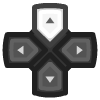 |
D-Pad Up | D-Pad Up | D-Pad Up |
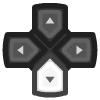 |
D-Pad Down | D-Pad Down | D-Pad Down |
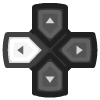 |
D-Pad Left | D-Pad Left | D-Pad Left |
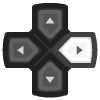 |
D-Pad Right | D-Pad Right | D-Pad Right |
 |
Select | Select | Select |
 |
Run | Run | Run |
 |
I | I | I |
 |
II | II | II |
 |
III (mapped to Select/Run) | III | |
 |
IV | ||
 |
V | ||
 |
VI | ||
 |
Toggle Turbo II | Toggle Turbo II | Toggle Turbo II |
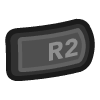 |
Toggle Turbo I | Toggle Turbo I | Toggle Turbo I |